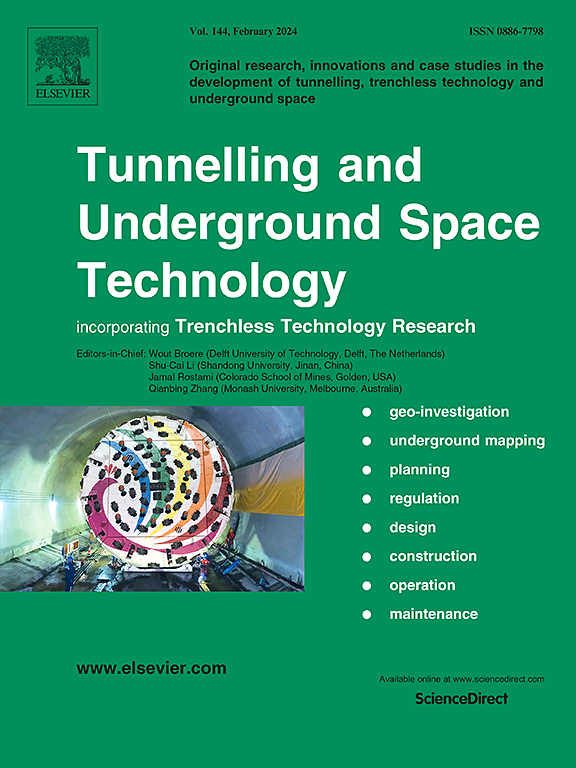一种基于深度学习的超大直径盾构隧道割桩状态识别新技术
IF 7.4
1区 工程技术
Q1 CONSTRUCTION & BUILDING TECHNOLOGY
引用次数: 0
摘要
在盾构切桩工程中,准确识别桩的位置和桩的数量是保证隧道掘进过程安全进行的关键。盾构切桩过程中产生的振动信号包含着丰富的信息。为了解决确定桩位和数量的挑战,本研究提出了一种基于振动特征的地层识别方法,该方法综合了知识驱动和数据驱动方法的双重优势。该方法包括数据处理模块、知识驱动模块、基于变压器的模型(MT)和综合评价模块,并在广州海珠湾盾构隧道工程中得到验证。结果表明,该方法对地层类型的识别准确率为99.56%,比MLP、RF和LSTM模型分别提高了1.33%、1.11%和14.16%。随着割桩数量的增加,振动信号频率逐渐升高,幅值变化不明显。基于这一发现,前五个频率被用作输入。采用位置编码有效学习频率的位置信息,使MT模型识别多桩的准确率达到65.71%,比MLP、RF和LSTM模型分别提高10.51%、19.14%和23.46%。综合评价分析表明,该方法具有较高的查全率和加权准确率,具有较强的工程适应性和灵活性。本文章由计算机程序翻译,如有差异,请以英文原文为准。
A novel deep learning-based identification technology of cutting pile states during super-large diameter shield tunnelling
Accurately identifying the position and quantity of piles is critical for ensuring the safe tunnelling process in shield cutting pile projects. The vibration signals generated during the shield cutting pile process contain abundant information. To address the challenge of determining pile positions and quantities, this study proposes a method for the identification of strata based on vibration characteristics, integrating the dual advantages of knowledge-driven and data-driven approaches. The method includes a data processing module, a knowledge-driven module, a transformer-based model (MT), and a comprehensive evaluation module, and it has been validated in the Guangzhou Haizhu Bay shield tunnel project. The results show that the developed method achieves an accuracy of 99.56% in the identification of strata types, improving by 1.33%, 1.11%, and 14.16% compared to the MLP, RF, and LSTM models, respectively. As the number of cutting piles increases, the frequency of vibration signals gradually rises, while the amplitude shows no significant change. Based on this finding, the top five frequencies were used as input. Position encoding was employed to effectively learn the positional information of the frequency, enabling the MT model to achieve an accuracy of 65.71% in identifying multiple piles, improving by 10.51%, 19.14%, and 23.46% compared to the MLP, RF, and LSTM models, respectively. Comprehensive evaluation analysis indicates that this method demonstrates superior recall and weighted accuracy, highlighting its strong flexibility and applicability in engineering contexts.
求助全文
通过发布文献求助,成功后即可免费获取论文全文。
去求助
来源期刊

Tunnelling and Underground Space Technology
工程技术-工程:土木
CiteScore
11.90
自引率
18.80%
发文量
454
审稿时长
10.8 months
期刊介绍:
Tunnelling and Underground Space Technology is an international journal which publishes authoritative articles encompassing the development of innovative uses of underground space and the results of high quality research into improved, more cost-effective techniques for the planning, geo-investigation, design, construction, operation and maintenance of underground and earth-sheltered structures. The journal provides an effective vehicle for the improved worldwide exchange of information on developments in underground technology - and the experience gained from its use - and is strongly committed to publishing papers on the interdisciplinary aspects of creating, planning, and regulating underground space.
 求助内容:
求助内容: 应助结果提醒方式:
应助结果提醒方式:


